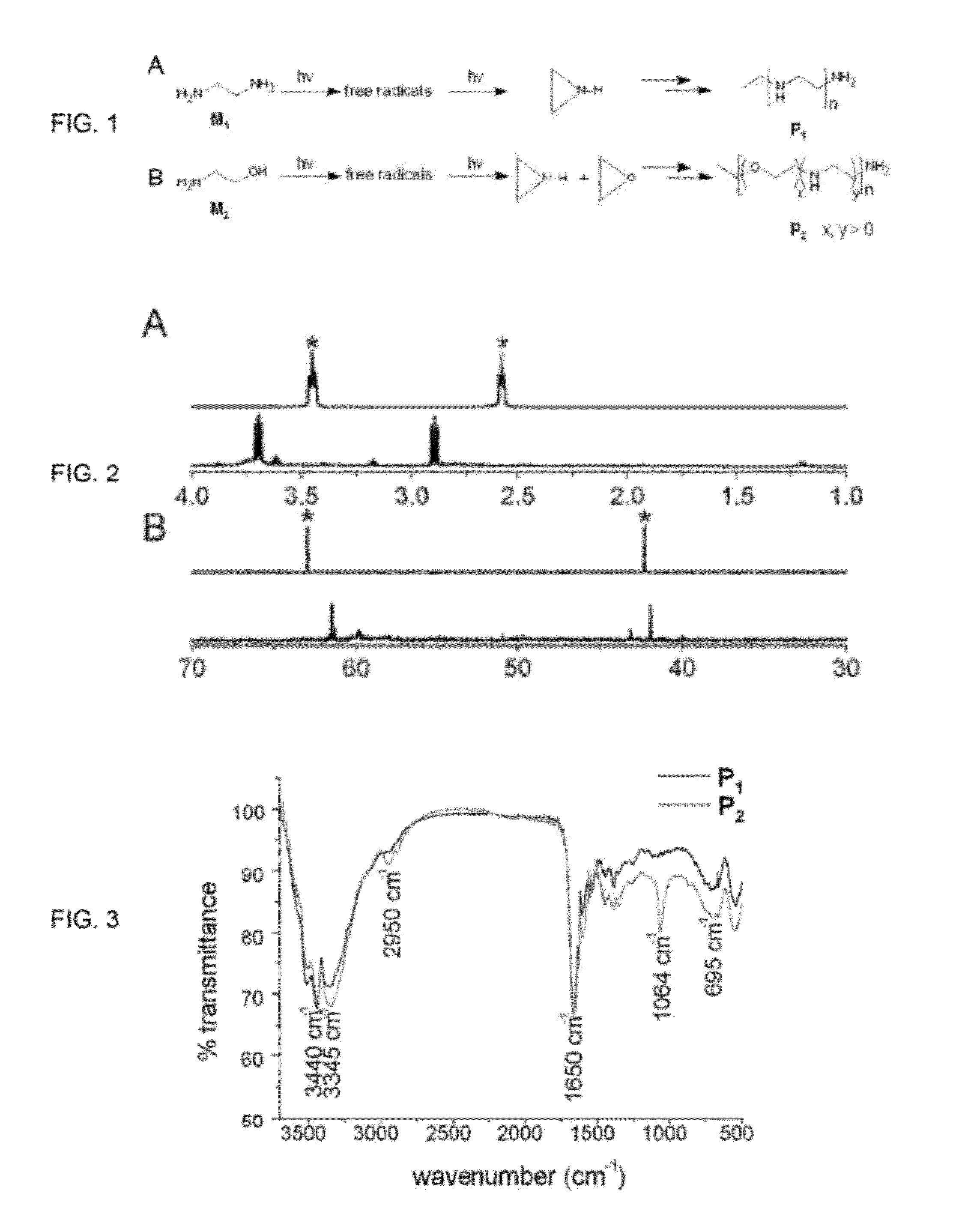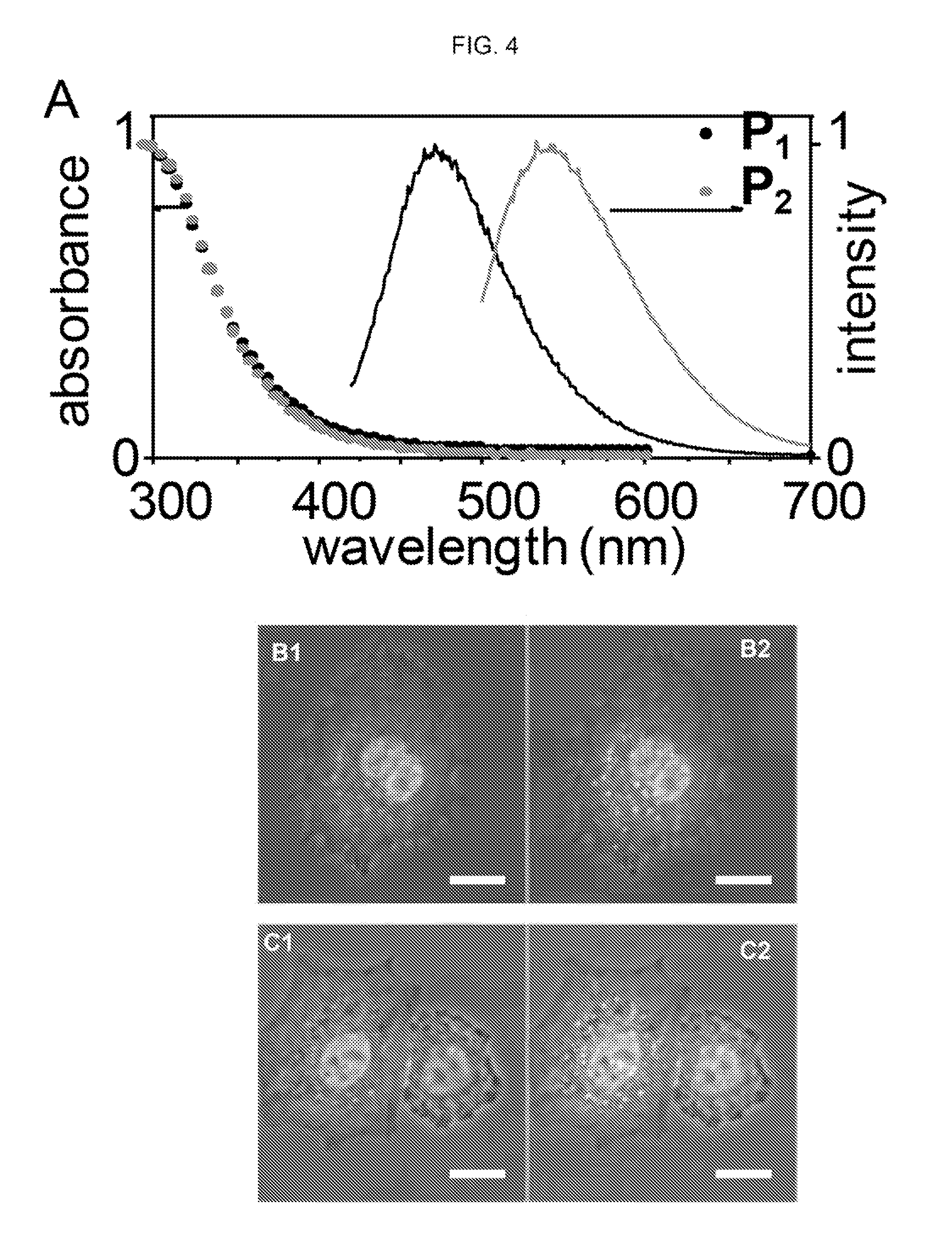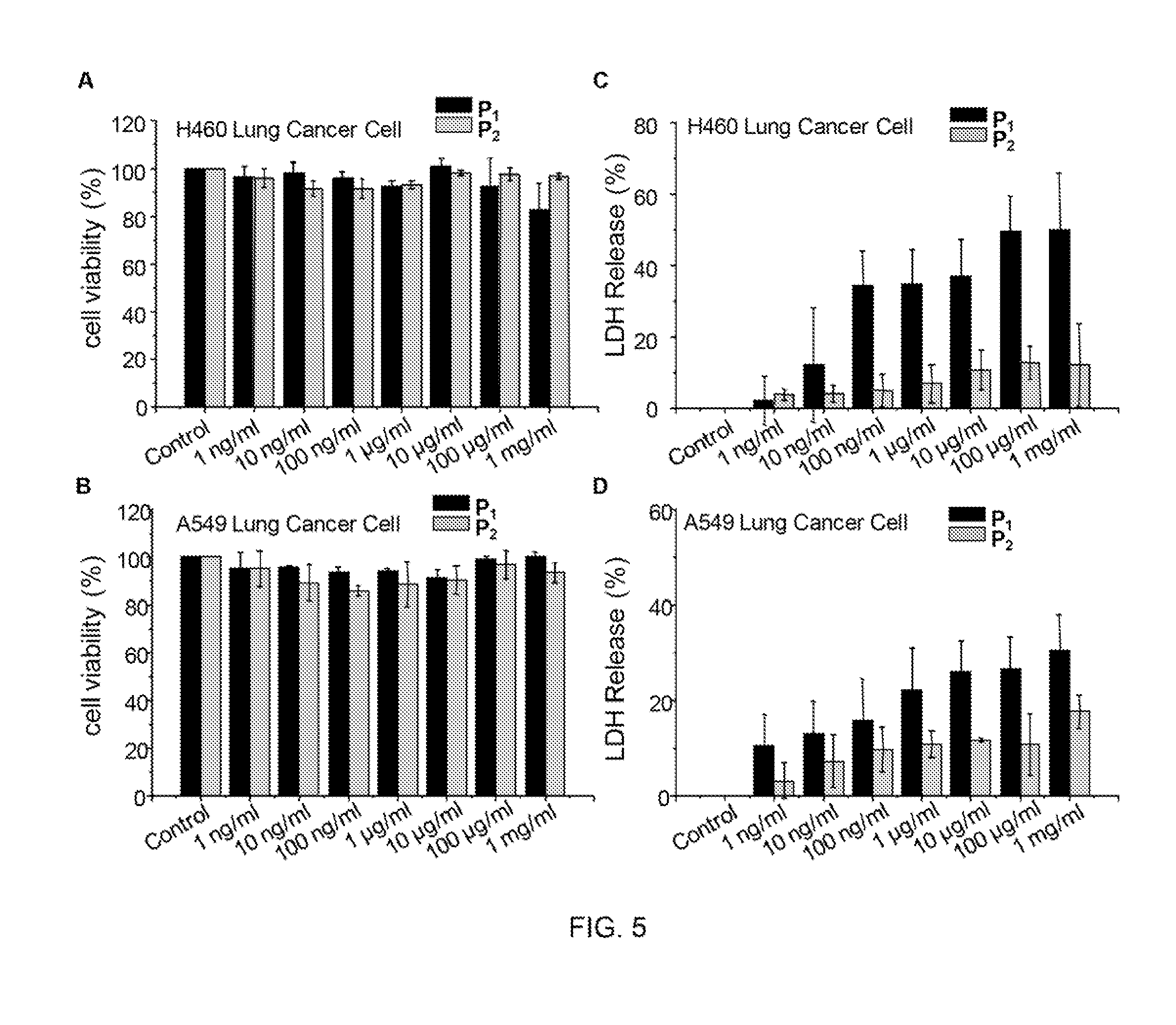Single monomer derived linear-like copolymer comprising polyethylenimine and poly(ethylene glycol) for nucleic acid delivery
a polyethylenimine and polyethylene glycol technology, applied in the preparation of amino compounds, drug compositions, amino preparations, etc., can solve the problems of high toxicity of current peis-based vehicles, low sirna release efficiency, and high transfection efficiency and toxicity of bpeis
- Summary
- Abstract
- Description
- Claims
- Application Information
AI Technical Summary
Benefits of technology
Problems solved by technology
Method used
Image
Examples
examples
[0061]Without intent to limit the scope of the invention, exemplary instruments, apparatus, methods and their related results according to the embodiments of the present invention are given below. Note that titles or subtitles may be used in the examples for convenience of a reader, which in no way should limit the scope of the invention. Moreover, certain theories are proposed and disclosed herein; however, in no way they, whether they are right or wrong, should limit the scope of the invention so long as the invention is practiced according to the invention without regard for any particular theory or scheme of action.
Methods and Materials
1. Monomers and Reagents
[0062]Ethylene diamine (M1) and ethanolamine (M2) were purchased from Sigma-Aldrich and Riedel-de Haen, respectively. No purification was performed prior to use. The commercial BPEIs (1.8 kDa, 50 wt. % solution in water) and Lipofectamine (Lipofectamine™ 2000 reagent, 1 mg / mL) were purchased from Aldrich and Invitrogen, res...
PUM
| Property | Measurement | Unit |
|---|---|---|
| weight average molecular weight | aaaaa | aaaaa |
| pH | aaaaa | aaaaa |
| concentrations | aaaaa | aaaaa |
Abstract
Description
Claims
Application Information
 Login to View More
Login to View More - R&D
- Intellectual Property
- Life Sciences
- Materials
- Tech Scout
- Unparalleled Data Quality
- Higher Quality Content
- 60% Fewer Hallucinations
Browse by: Latest US Patents, China's latest patents, Technical Efficacy Thesaurus, Application Domain, Technology Topic, Popular Technical Reports.
© 2025 PatSnap. All rights reserved.Legal|Privacy policy|Modern Slavery Act Transparency Statement|Sitemap|About US| Contact US: help@patsnap.com



